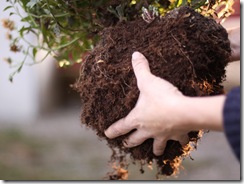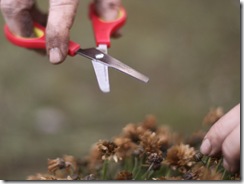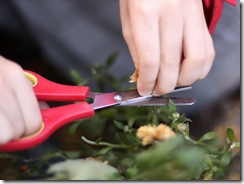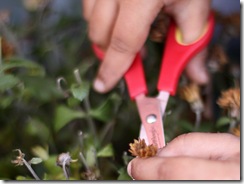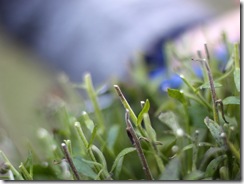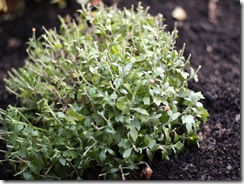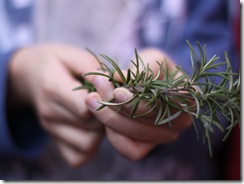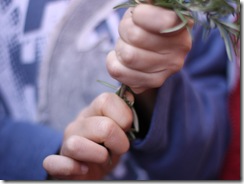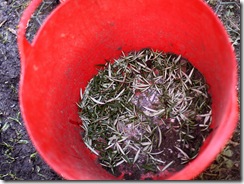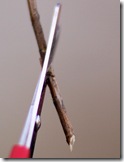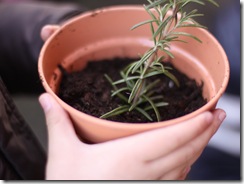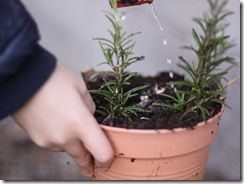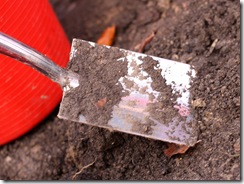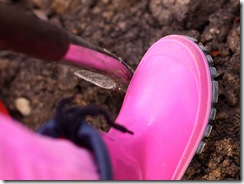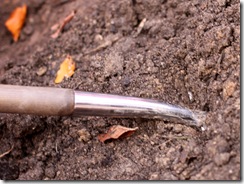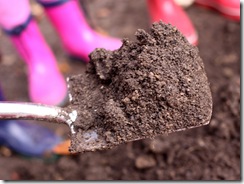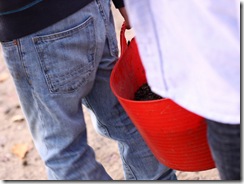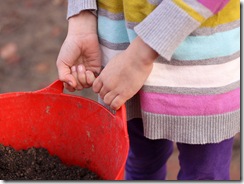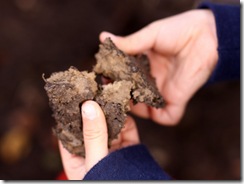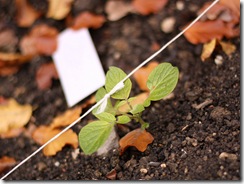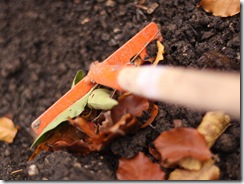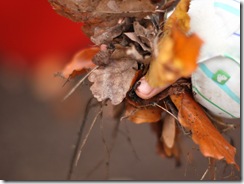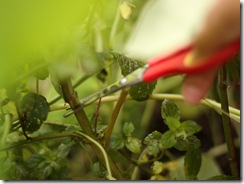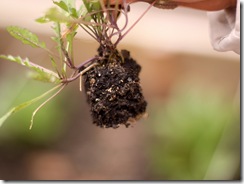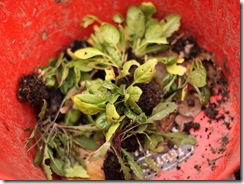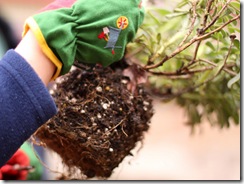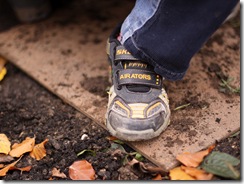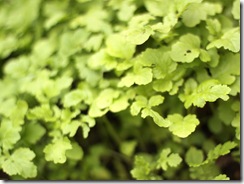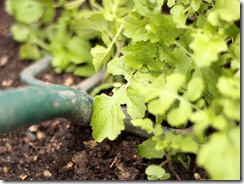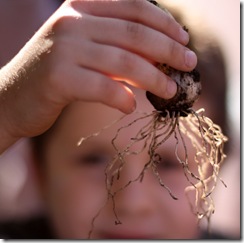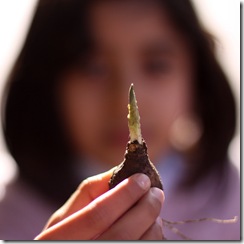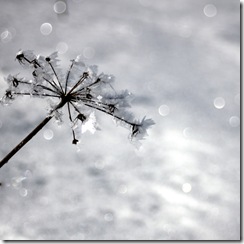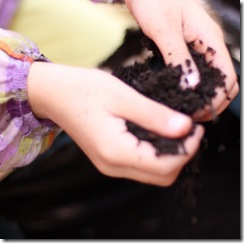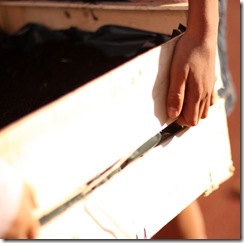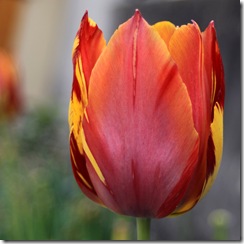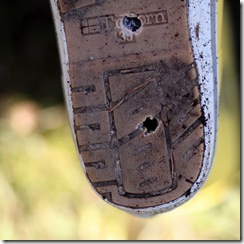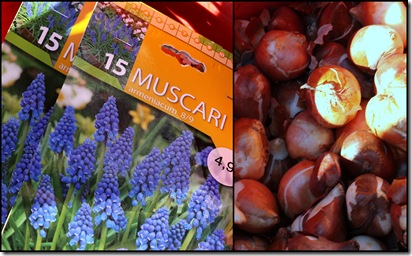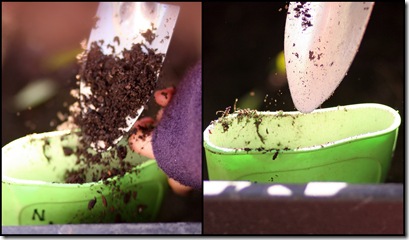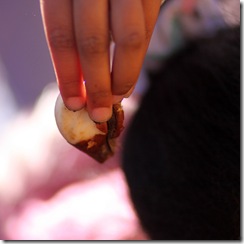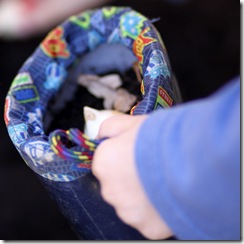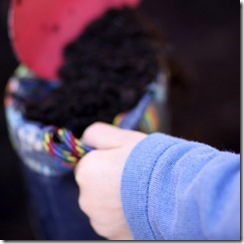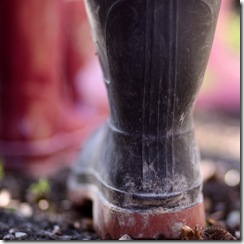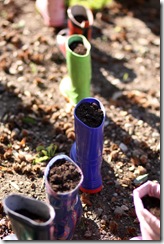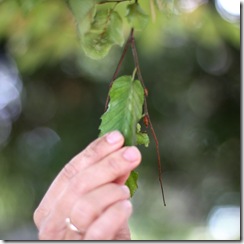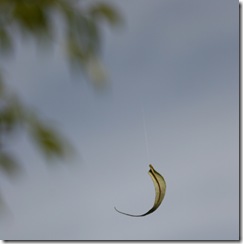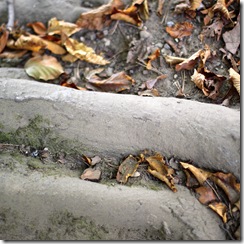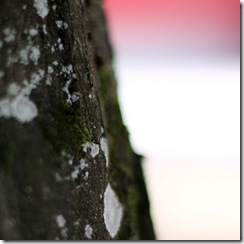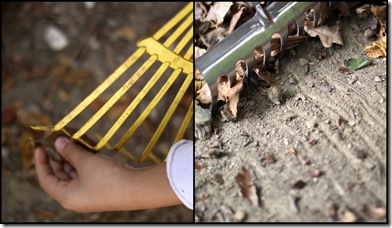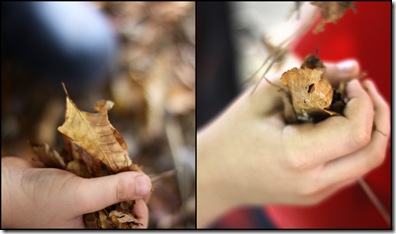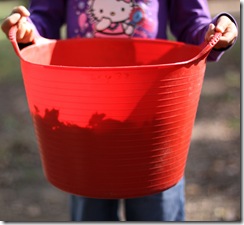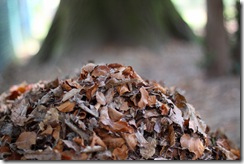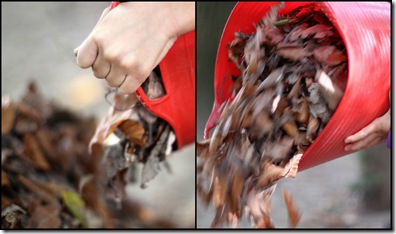Just take a look at this sad-looking specimen.
It, along with a dozen or so similar plants, was ‘rescued’ from a rather neglected one-time ‘display’. What, we wondered, had gone wrong. The crisp brown flowers and the withered buds, not to mention the dusty soil that was as-dry-as-the-proverbial-bone pointed towards them not having been watered for a very long time.
But never mind. Class 2i to the rescue! Our job? To give the plants a ‘hair-cut’, snipping off the crispy flowers and those withered buds…..
(just the crispy flowers and those withered buds mind)…..
being careful to keep our fingers…..
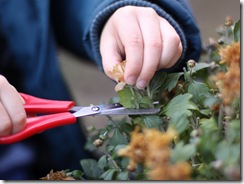
safely tucked out of the way.
You see, we needed to stop the poor plants from wasting precious energy trying to keep themselves covered in blooms, when actually they ought to be conserving their strength for the cold weather that is on its way (and incidentally, as I type this I am looking out at freshly snow-dusted pine trees).
The newly-trimmed plants were then tucked into some of our friable well-dug soil…..
and most-importantly, watered in. There to over-winter. And recuperate.
But, that was not all. There were also trimmings from the rosemary bushes. Far too much for Sunday’s roast lamb! No, we were going to have a go at making (more) new plants from old.
First, grip a sprig of rosemary firmly in your hands.
Using your thumb, scrape off the leaves on the lower part of the stem.
Toss these into the bucket…..
later to be dumped onto the compost heap. Next, snip the stem with a diagonal cut.
Finally, poke it into a pot of our famous soil…..
trickle on a dribble or two of water…..
and fingers crossed until spring!
